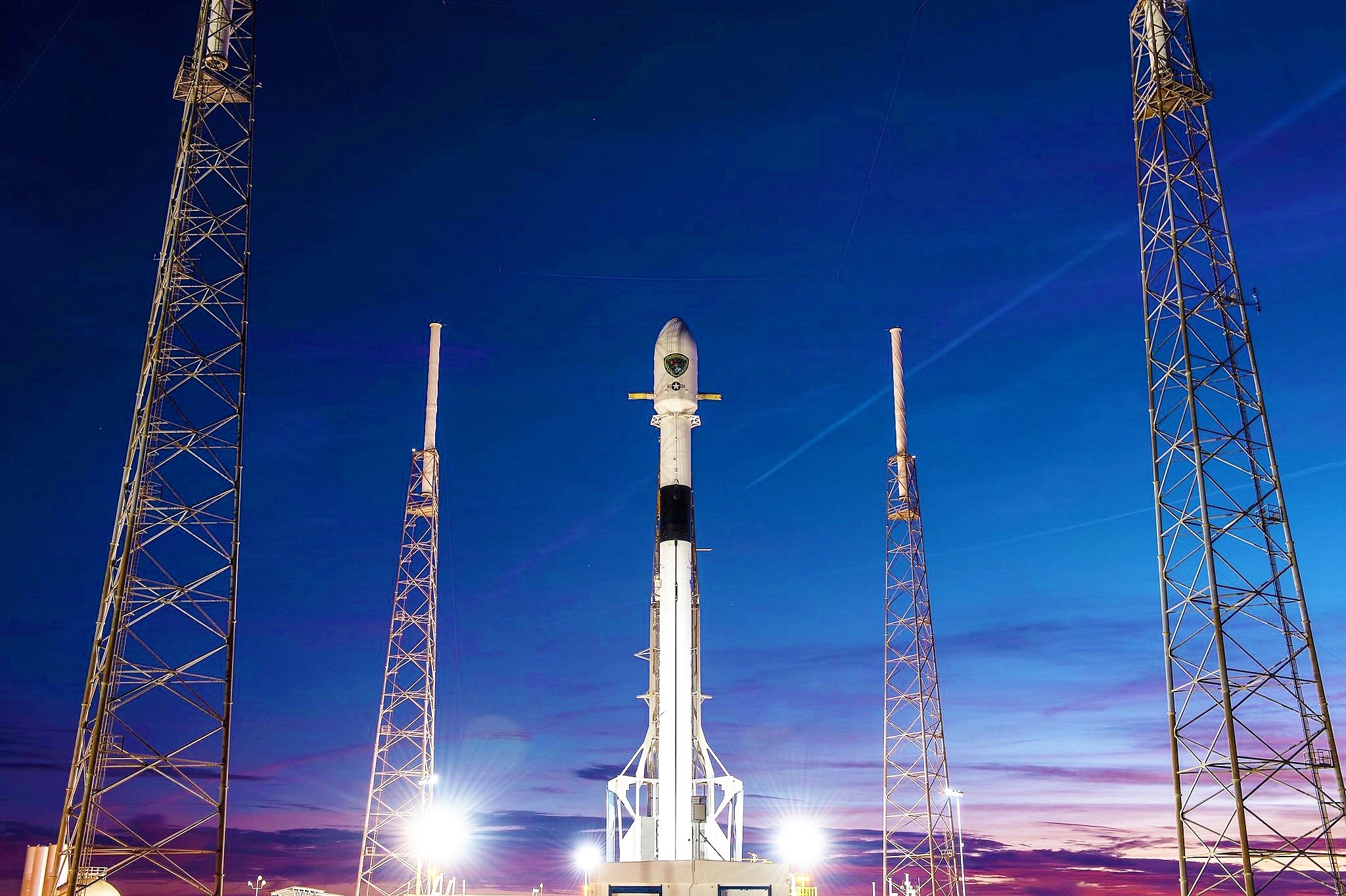Insta
‘The Beginning Of Next Generation Navigation’: US Airforce All Set To Launch First GPS III Satellite

Falcon 9 and GPS III ready on launch pad in Florida for launch. (@spacex / image via twitter)
The United States (US) launched the first set of navigation satellites for military purposes in 1973 and opened the system for commercial use in the 1980s. Now, with the old set of satellites nearing half a century mark, the US Airforce is set to launch the first satellite of new generation GPS III on a SpaceX Falcon 9 rocket from Florida’s Launchpad 40.
Designed by US military, the satellites are being built by Lockheed Martin in its 40,000 sq ft facility in Denver, Colorado. The new generation satellite boast three times the accuracy along with better security and versatility.
A minimum of 24 satellites are required for obtaining location from anywhere on Earth. The current GPS system is a cluster 31 satellites will be replaced by 32 of new GPS III satellites.
Apart from significant public use for location-based services the GPS also aids in time-stamping bank transactions, agriculture, air traffic and surveying. According to US Air Force estimates, an estimated 4 billion people use the GPS.
The signal from the satellite will be L1C Global Navigation Satellite System (GNSS) compatible - meaning that civilians who are capable of receiving this signal will experience better accuracy. The signal will also have a stronger military component with anti-jamming capability eight times better than predecessor.
Glen Gibbons, the founder and former editor of Inside GNSS magazine said that current civilian GPS receivers are accurate to within 3 to 10 meters and with new satellites, the accuracy will be 1 to 3 meters if the signal is well received.
Only the anti-jam capable military signal feature will be available until 2022 as the development new ground control system is expected to be complete by 2022 or later.
Raytheon is developing the new ground control system GPS OCX. “The company at least four years behind schedule and (the project) is expected to cost $2.5 billion more than the original $3.7 billion”, said government accountability officer for GPS Cristina Chaplain.
The upcoming OCX system will have improved accuracy and can support double the number of GPS satellites, says Raytheon’s website.
The project has faced delay due to reasons like delivery of first GPS III satellite being two years and six months behind schedule and this being the first GPS launch of Falcon 9, which led to delayed certification, said Chaplain.
However, with things now falling in place, Falcon 9 will lift off at 14.11 UTC on Tuesday (18 December) from Cape Canaveral, Florida with the first GPS III satellite.
The second satellite is also ready and waiting to be shipped to Cape Canaveral. It is expected to be launched in next summer, said Jonathon Caldwell, vice president of Lockheed Martin’s GPS program.
Six other GPS satellites are under construction in the clean room, which is carefully protected against dust and other foreign particles.
Interestingly, US Air Force has assigned a nickname to the first GPS III which is ‘Vespucci’, after the Italian navigator Amerigo Vespucci.
Support Swarajya's 50 Ground Reports Project & Sponsor A Story
Every general election Swarajya does a 50 ground reports project.
Aimed only at serious readers and those who appreciate the nuances of political undercurrents, the project provides a sense of India's electoral landscape. As you know, these reports are produced after considerable investment of travel, time and effort on the ground.
This time too we've kicked off the project in style and have covered over 30 constituencies already. If you're someone who appreciates such work and have enjoyed our coverage please consider sponsoring a ground report for just Rs 2999 to Rs 19,999 - it goes a long way in helping us produce more quality reportage.
You can also back this project by becoming a subscriber for as little as Rs 999 - so do click on this links and choose a plan that suits you and back us.
Click below to contribute.
Latest